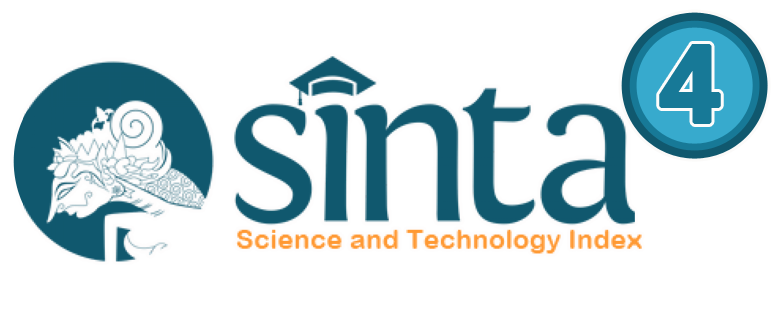STUDI KELAYAKAN HUTAN LINDUNG MONGGAL SEBAGAI TAMAN WISATA ALAM (TWA) GUNA MENINGKATKAN DAYA TARIK WISATAWAN
DOI:
https://doi.org/10.29303/distribusi.v11i2.407Keywords:
Kesejahteraan Masyarakat, Pendapatan Asli Daerah, Studi Kelayakan, Taman Wisata AlamAbstract
The purpose of this research is to analyze the feasibility study of the Monggal protection forest as a nature tourism park (TWA) in order to increase tourist attraction which is expected to be one way to support the growth of Regional Original Revenue (PAD) and the welfare of the local community and drive the local economy. From the general objectives, it can be further elaborated on the specific objectives, namely (1) to analyze the feasibility of non-financial aspects of the TWA business including market, management, social, economic, and cultural aspects, and the environment. (2) to analyze the feasibility of the financial aspects of the TWA business. This research uses quantitative methods with survey techniques with data collection carried out through several stages, namely: Literature study, Observation, and Focus Group Discussion with various stakeholders.
The results of this study reveal that the development of TWA in Genggelang Village, Gangga District, North Lombok Regency is feasible to develop due to the consideration that (1) Feasibility from non-financial aspects (2) Feasibility from financial aspects is carried out by calculating the NPV value for 10 years of Rp 1,214,388,386.85 with a rate of return on investment (IRR) of 32%. Then the Net B / C value of Rp 4,043. and Payback Period for 2 years and 3 months
Downloads
References
Ardiwidjaja, R. (2003). Membedah Konsep Pariwisata Berkelanjutan. Sinar Harapan, Bandung.
Peraturan Menteri Lingkungan Hidup dan Kehutanan Republik Indonesia Nomor P.13/ MenLHK/ Setjen/ Kum.1/ 5/ 2020 tentang Pembangunan Sarana dan Prasarana Wisata Alam di Kawasan Hutan, Pub. L. No. P.13/ MenLHK/ Setjen/ Kum.1/ 5/ 2020 (2020).
Nazir, M. (2005). Metode Penelitian. Jakarta: Ghalia Indonesia.
Septiani, E., Sagir, J., Serip, S., & Rahmayanti, P. L. D. (2023). Analisis Persepsi Dan Sikap Wisatawan Atas Dikembangkannya Kawasan the Mandalika. Distribusi - Journal of Management and Business, 11(1), 81–94. https://doi.org/10.29303/distribusi.v11i1.300
Sulistyowati, K., & Salim, U. (2013). Competitive Strategy : As Mediation the Effect of External Business Environment and Total Quality Management Implementation Toward Company Performance ( Study at ISO 9000 certified manufacture companies in East Java ). 8(2), 7–20.
Suwantoro, G. (2004). Dasar-dasar Pariwisata. Penerbit Andi Yogyakarta.
Teguh Sulistiyani, A. (2004). Kemitraan dan Model-Model Pemberdyaan. Yogyakarta: Gava Media.
Undang-undang No.5 Tahun 1990. (1990). Undang-undang No.5 Tahun 1990 (No. 5).
Untoro, J. & P. (2009). Taman tematik terpadu. (Jakarta : Gramedia.
Wantara, P., & Tambrin, M. (2021). Hubungan Struktural Kualitas Layanan, Kualitas Produk, Kepuasan Pelanggan, Dan Niat Ulang Berkunjung Ke Pantai Long Malang Di Sampang. Distribusi - Journal of Management and Business, 9(2), 207–220. https://doi.org/10.29303/distribusi.v9i2.168
Yoeti, O. A. (2013). Pemasaran Pariwisata Terpadu. Bandung: Penerbit Angkasa.
Zaenuri, M. (2012). Perencanaan Stretegis Kepariwisataan Daerah: Konsep dan Aplikasi. Yogyakarta: e-Gov Publishing Jl. Mangunegaran Kidul 14 Kraton - Yogyakarta.
Downloads
Published
How to Cite
Issue
Section
License
Copyright (c) 2023 Abdurrahman, Himawan Sutanto, Zamroni Alpian Muhtarom, Muhammad Mujahid Dakwah, Baiq Handayani Rinuastuti

This work is licensed under a Creative Commons Attribution-ShareAlike 4.0 International License.
Penulis yang naskahnya diterbitkan menyetujui ketentuan sebagai berikut:
- Hak publikasi atas semua materi naskah jurnal yang diterbitkan/dipublikasikan dalam situs Jurnal DISTRIBUSI ini dipegang oleh dewan redaksi dengan sepengetahuan penulis (hak moral tetap milik penulis naskah).
- Ketentuan legal formal untuk akses artikel digital jurnal elektronik ini tunduk pada ketentuan lisensi Creative Commons Attribution-ShareAlike (CC BY-SA), yang berarti Jurnal DISTRIBUSI berhak menyimpan, mengalih media/format-kan, mengelola dalam bentuk pangkalan data (database), merawat, dan mempublikasikan artikel tanpa meminta izin dari Penulis selama tetap mencantumkan nama Penulis sebagai pemilik Hak Cipta.
- Naskah yang diterbitkan/dipublikasikan secara cetak dan elektronik bersifat open access untuk tujuan pendidikan, penelitian, dan perpustakaan. Selain tujuan tersebut, dewan redaksi tidak bertanggung jawab atas pelanggaran terhadap hukum hak cipta.









